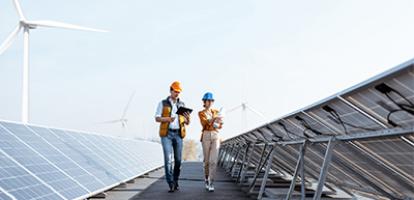From: Miles Wu
To: Canadian policymakers
Date: August 6, 2020
Re: Lessons from Abroad
China’s second quarter economic report – GDP up 3.2 percent year over year, reversing the 6.8 percent first quarter drop – was watched closely around the world, as it offered early glimpses of post-COVID economic recovery.
Unpacking the numbers yields some lessons for Canada of what the road to recovery may look like, and a foretaste of which sectors may need further assistance.
In China, the high-tech sector saw a particularly strong rebound, with its manufacturing revenue up 4.5 percent in the second quarter year-over-year, with June coming in at a brisk 10 percent. Telecommunication industry revenue increased 14.5 percent in the first two quarters. This has fueled optimism in the industry, with investment rising 6.3 percent while investment for other sectors, like property and infrastructure, fell over the same period. This advantage will likely persist, as the relative ease in which employees of this sector can work while social distancing means there are few barriers to returning to work.
Meanwhile, retail sales and restaurants continue to show weak recovery months after reopening, seeing 8.1 percent and 26.8 percent decreases for the first six months of 2020. Consumption continues to be a drag on China’s economy, as people are reluctant to spend disposable income amidst economic uncertainties. Although consumption figures are rising again, June still saw a 1.8 percent decrease compared to last year, and the entire first half of the year saw a 11.4 percent drop. Car sales are especially low, with June returning a 6.5 percent decrease in sales year on year.
These statistics illustrate a likely common challenge across economies as they re-open, which is the sheer unevenness as well as potential choppiness of the recovery. A particular challenge in this respect will be rolling back the CERB and CEWS so that we limit the current steep rise in the public debt, without compromising jobs or viable firms in at-risk industries that will recover more slowly due to circumstances outside their control.
The proposed changed to CEWS show the need for the program to evolve as COVID-19 enters different stages and moving forward should account for the different speeds at which industries recover. Wage subsidies for struggling restaurants and retail stores will still be needed, while crisis-related support for high-tech companies may need to be revisited as capital markets stabilize and demand for such products rises back to pre-crisis levels. While it will be difficult to do so without appearing to pick “winners and losers,” criteria must be established to wean those who do not need the programs from them and focusing spending on people and firms who need longer to find stability.
Consumer confidence will be difficult to recover until COVID-19 is firmly in the rear-view mirror and people are fully comfortable going outside their homes again and into other enclosed environments. For that, the government must remain vigilant and carefully monitor cases and balance how quickly to re-open the economy. Any setbacks in re-opening could prove catastrophic for industries that need consumer spending to increase in the near future and will mean more government spending will be needed to keep them afloat.
While we are two very different economies, China’s road to recovery can hold useful lessons in terms of the difficulties Canadian economic sectors will face in the not-too-distant future.
Miles Wu is a Researcher at the C.D. Howe Institute.
To send a comment or leave feedback, email us at blog@cdhowe.org.
The views expressed here are those of the author. The C.D. Howe Institute does not take corporate positions on policy matters.





